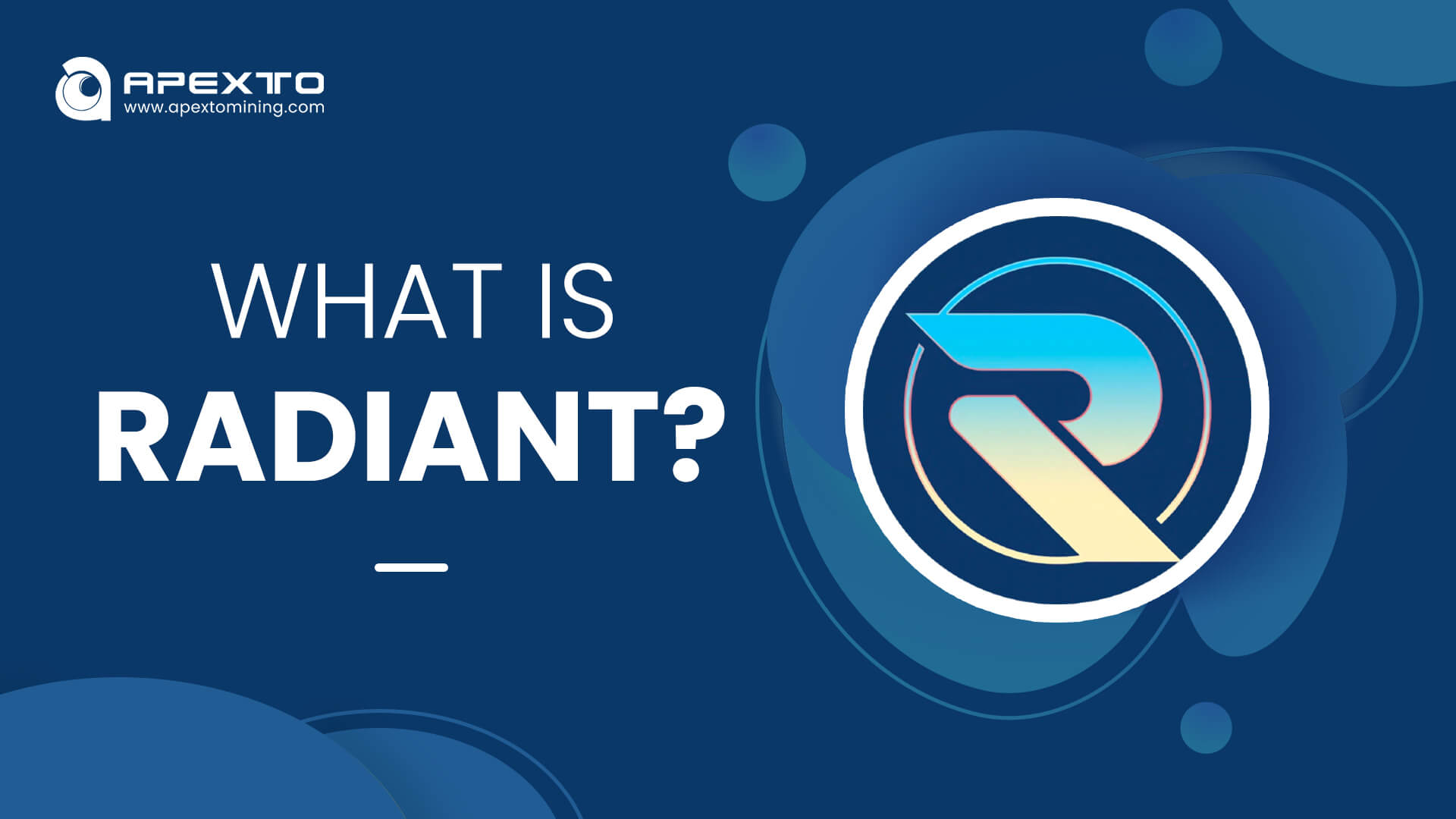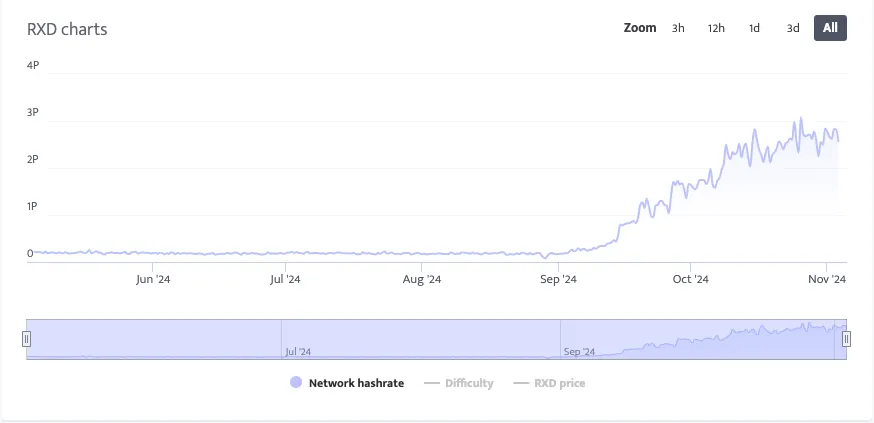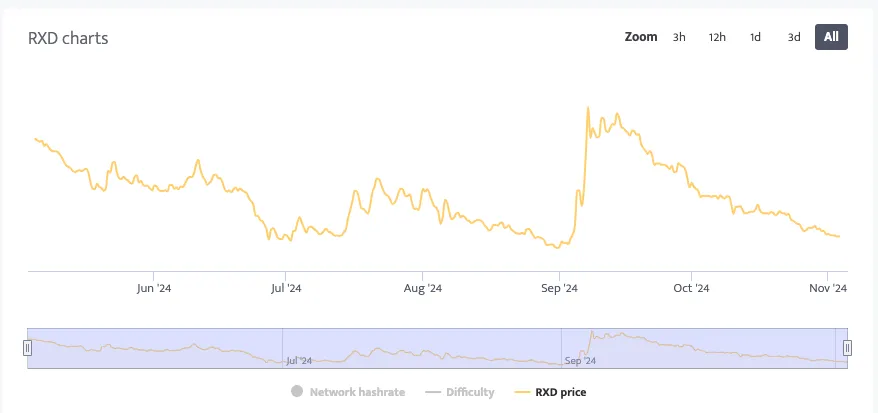Radiant: A Comprehensive Exploration of Mining

Introduction
Radiant (RDX) is a peer-to-peer digital asset system designed to enable direct exchanges of value without relying on a central authority. Unlike traditional blockchain solutions, which often suffer from high fees and limited scalability, Radiant aims to solve these challenges by incorporating a unique approach to transaction processing and digital asset validation. Built upon a proof-of-work (PoW) consensus mechanism similar to Bitcoin’s, Radiant timestamps transactions into a hash-based chain, ensuring a secure, decentralized, and scalable network. Radiant’s design combines the best elements of unspent transaction output (UTXO) blockchains with the flexible programming capabilities of Ethereum-like environments. This hybrid model allows Radiant to support advanced applications, including custom digital assets, in a highly efficient manner. The project was initiated by a community-driven group focused on creating a fair, open-source platform, without relying on ICOs, venture capital, or other fundraising. Through this, Radiant presents a stable and scalable blockchain solution that is accessible to all.
In this article, we will explore Radiant’s architecture, its mining ecosystem, available wallets and exchanges, and provide insights into its price prediction, helping you understand its potential in the cryptocurrency landscape.
Overview of Radiant Coin
Radiant Coin (RDX) is a peer-to-peer digital asset system designed to address the limitations of existing blockchains, such as high transaction costs, instability, and limited scalability. By combining the Unspent Transaction Output (UTXO) model with account-based features, Radiant offers a hybrid architecture that supports massive blocks and low fees, making it suitable for a wide range of applications.
The network operates on a decentralized proof-of-work (PoW) consensus mechanism, utilizing the SHA512/256 algorithm. This approach ensures secure and efficient transaction processing, similar to Bitcoin but optimized for higher performance. Radiant’s design enables the creation and management of custom digital assets through “assetbase transactions,” allowing for the development of complex smart contracts and decentralized applications (dApps).
Launched without an Initial Coin Offering (ICO) or venture capital funding, Radiant was bootstrapped by a community-driven group committed to creating a fair and open-source platform. This grassroots approach emphasizes decentralization and community involvement, inviting anyone to participate in the network by contributing computing power or developing applications on the platform.
Radiant Mining: Transition from GPU to ASIC Mining
Radiant (RXD) operates on a proof-of-work (PoW) consensus mechanism, utilizing the SHA512/256 hashing algorithm to secure its network. This approach requires miners to solve complex cryptographic puzzles to validate transactions and add new blocks to the blockchain. The network is designed with a block time of approximately 60 seconds, meaning a new block is added to the blockchain every minute. Each successfully mined block rewards the miner with 25,000 RXD. Notably, Radiant does not have a capped total supply, allowing for continuous issuance of new coins over time.
In the early stages of the Radiant network, mining was predominantly conducted using high-performance GPUs from manufacturers like Nvidia and AMD. These GPUs offered flexibility and a relatively low initial investment, making them popular among early miners. Below is a table showcasing the performance and efficiency of five GPUs that were commonly used for RXD mining before the advent of ASIC miners:
| GPU Model | Hashrate (MH/s) | Efficiency (MH/W) | Est. D/Profit (USD) |
|---|---|---|---|
| Nvidia RTX 3090 | 120 | 0.41 | $0.50 |
| Nvidia RTX 3080 | 100 | 0.40 | $0.45 |
| Nvidia RTX 3070 | 80 | 0.36 | $0.40 |
| AMD RX 6800 XT | 90 | 0.30 | $0.35 |
| AMD RX 6700 XT | 70 | 0.30 | $0.30 |
Note: The above figures are estimates and can vary based on factors such as mining software, overclocking settings, and electricity costs.
In September 2024, the release of ASIC miners like the DragonBall Miner A11 Radiant and Iceriver RX0 brought significant changes to the RXD mining landscape. These ASIC devices offer substantially higher efficiency and hashrate compared to traditional GPUs, leading to a sharp increase in the network’s total hashrate. This surge has made GPU mining less competitive, as ASIC miners dominate the network.
The following table presents the performance and profitability of the leading ASIC miners for RXD:
| Model | Hashrate (GH/s) | Power Cost(W) | Estimated Daily Profit (USD) |
|---|---|---|---|
| DragonBall Miner A11 Radiant | 3,200 | 2,300 | $5.79 |
| Iceriver RX0 | 260 | 100 | $0.47 |
Note: Profitability estimates are subject to change based on network difficulty, RXD market price, and electricity costs.
The introduction of ASIC miners has shifted RXD mining from individual GPU miners to larger, professional mining operations. This transition has increased mining efficiency and network stability but has also raised the entry barrier, making it challenging for small-scale miners to compete. For those interested in mining RXD, investing in efficient ASIC miners has become essential to achieving profitability.
Wallet and Exchange
Radiant (RDX) provides users with multiple options for securely storing and trading their digital assets. To ensure the security of their RXD tokens, users can choose from a range of compatible wallets, including hardware wallets, desktop applications, and mobile apps that support Radiant’s blockchain architecture. By storing RXD in secure wallets, users can retain full control over their private keys and safeguard their assets from potential online threats.
For those interested in trading RXD, Radiant is listed on several popular cryptocurrency exchanges, allowing users to buy, sell, and trade RXD against various fiat and cryptocurrency pairs. Some of the key exchanges supporting Radiant include Bit.com, Txbit.io
The introduction of ASIC miners has shifted RXD mining from individual GPU miners to larger, professional mining operations. This transition has increased mining efficiency and network stability but has also raised the entry barrier, making it challenging for small-scale miners to compete. For those interested in mining RXD, investing in efficient ASIC miners has become essential to achieving profitability.
Market Analysis and Price Trends
Radiant (RXD) has shown considerable volatility in the cryptocurrency market, impacted by network developments and broader market conditions. The release of ASIC miners, such as the DragonBall Miner A11 Radiant and Iceriver RX0, led to a surge in network hashrate and increased security, sparking a spike in RXD price in September 2024. This shift to more efficient mining hardware like radiant miners has made traditional GPU and rxd miners less competitive.
RXD’s market performance is also influenced by its potential applications in decentralized finance (DeFi) and digital assets. With the radiant crypto ecosystem expanding, many are optimistic about the token’s future price trajectory. Various price predictions suggest that as demand for radian token use cases grows, RXD and rdnt crypto could see sustained growth. However, factors like market volatility and the uncertain future of cryptocurrency regulation should be considered in any radiant coin price prediction.
CONCLUSION
Radiant (RXD) stands out as a versatile digital asset with unique attributes, including a proof-of-work consensus mechanism based on SHA512/256, support for UTXO, and account-based features. This setup enables more complex applications compared to traditional cryptocurrencies. With the growing presence of radiant miners and RXD coin pools, as well as accessible wallet and radiant coin exchange options, Radiant’s ecosystem is well-positioned for expansion. As more users engage with RXD through rxd radiant coin wallets and exchanges, the network benefits from increased security and liquidity. For investors, the radiant price and rxd price are significant considerations. While optimistic price predictions highlight the coin's potential, it’s essential to approach with caution due to the inherent volatility in crypto markets. Overall, Radiant’s community-driven, open-source development, combined with a robust radiant mining infrastructure, makes RXD a noteworthy project in the blockchain space.










